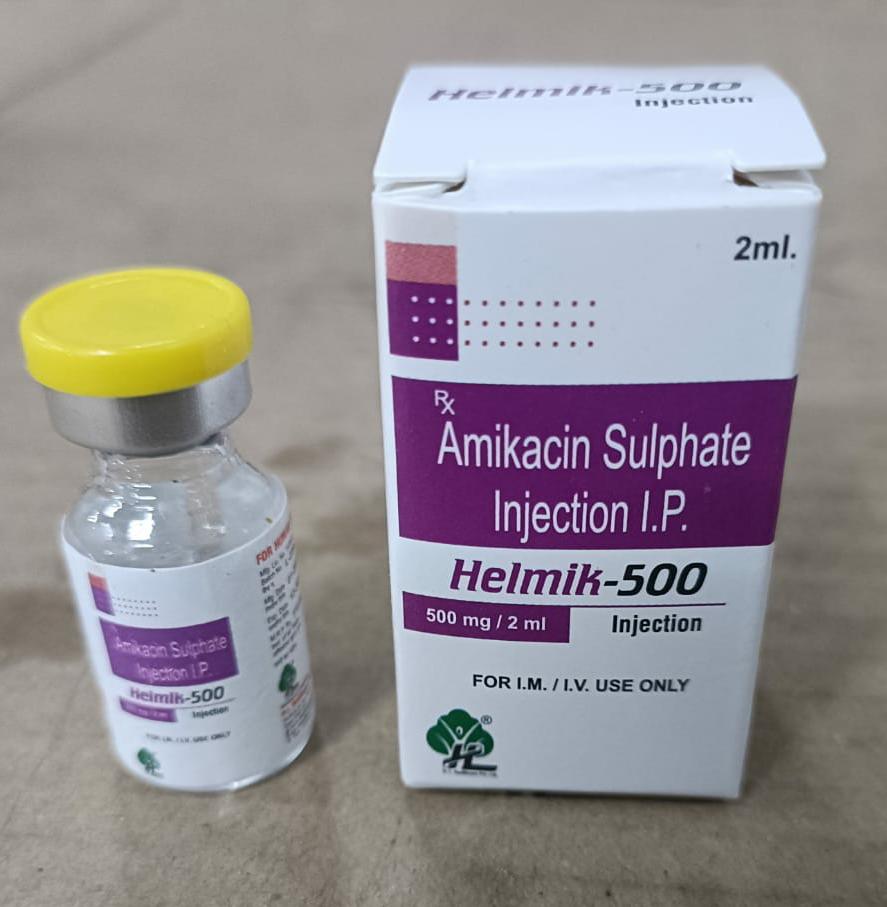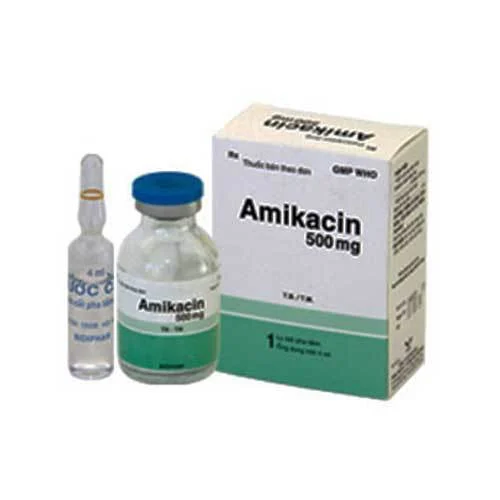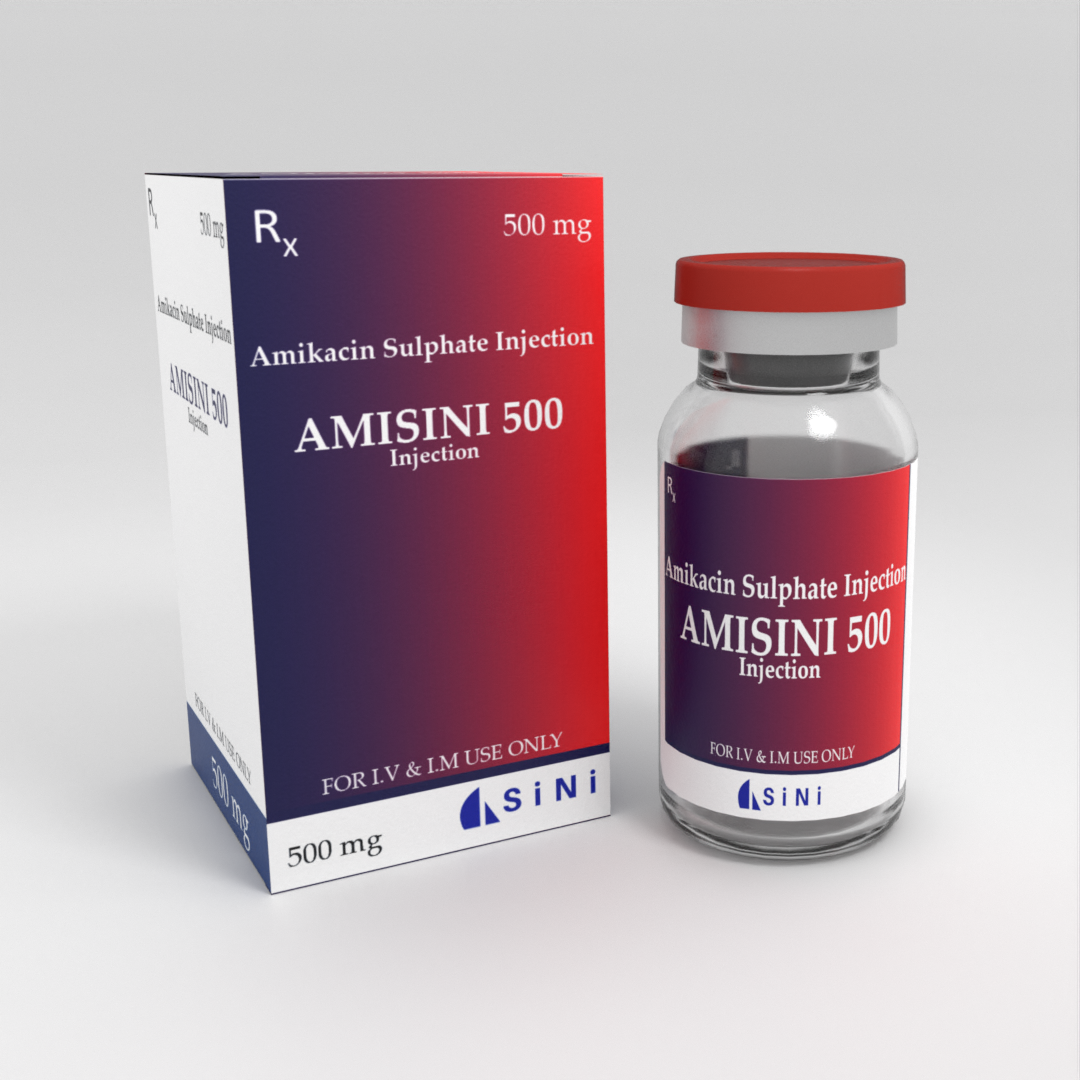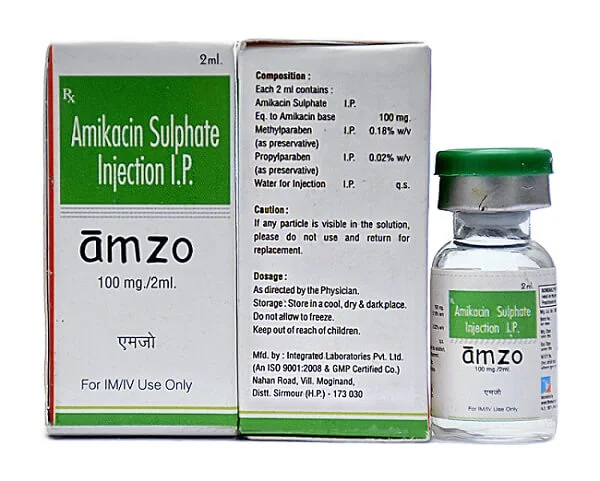Description
Amikacin: A Powerful Weapon Against Resistant Infections
Amikacin is a potent antibiotic belonging to the aminoglycoside class. It’s a semi-synthetic derivative of kanamycin, and while it has a narrower spectrum of activity compared to some other aminoglycosides, it’s a crucial drug in our arsenal against serious infections, particularly those caused by multi-drug resistant gram-negative bacteria.
How Amikacin Works:
Amikacin works by inhibiting protein synthesis in bacteria. It binds to the 30S ribosomal subunit, disrupting the ability of the bacteria to correctly translate genetic code. This prevents the bacteria from producing essential proteins needed for growth and survival, ultimately leading to bacterial cell death.
When is Amikacin Used?
Due to its potential for toxicity, amikacin is generally reserved for infections that are proven or strongly suspected to be resistant to other, less toxic antibiotics. Common applications include:
- Serious gram-negative infections: This includes infections like pneumonia, sepsis (blood poisoning), intra-abdominal infections, and urinary tract infections.
- Infections caused by resistant bacteria: Amikacin is often used against bacteria like Pseudomonas aeruginosa, Acinetobacter baumannii, and certain strains of Enterobacteriaceae that have developed resistance to other antibiotics.
- Mycobacterial infections: Amikacin is occasionally used as part of a multi-drug regimen to treat certain mycobacterial infections, including some forms of tuberculosis (TB) that are resistant to first-line treatments.
- Empirical therapy: In critically ill patients with suspected gram-negative infections, amikacin may be started empirically (before definitive cultures are available) to provide broad-spectrum coverage until the causative organism and its sensitivities are identified.
Important Considerations and Side Effects:
While amikacin is a valuable tool, it’s not without its risks. The two main concerns are:
- Nephrotoxicity (Kidney Damage): Amikacin can cause kidney damage, especially with prolonged use or at high doses. Close monitoring of kidney function (through blood tests like creatinine and blood urea nitrogen – BUN) is crucial during treatment. Patients with pre-existing kidney problems are at higher risk.
- Ototoxicity (Hearing Loss and Balance Problems): Amikacin can also damage the inner ear, leading to hearing loss, tinnitus (ringing in the ears), and balance problems. Regular audiometric testing (hearing tests) may be recommended, especially in patients receiving prolonged treatment or those with pre-existing hearing issues.
Other Considerations:
- Dosage and Administration: Amikacin is typically administered intravenously or intramuscularly. Dosage is carefully calculated based on body weight and kidney function.
- Therapeutic Drug Monitoring (TDM): TDM is often utilized with amikacin to ensure adequate drug levels are achieved to effectively kill the bacteria while minimizing the risk of toxicity. Blood samples are taken at specific times to measure the concentration of amikacin in the patient’s system.
- Drug Interactions: Amikacin can interact with other medications, potentially increasing the risk of side effects. It’s important to inform your doctor about all medications you are taking.
- Pregnancy and Breastfeeding: Amikacin should be used with caution during pregnancy and breastfeeding due to potential risks to the fetus or infant.
The Future of Amikacin:
As antibiotic resistance continues to rise, amikacin remains a critical antibiotic for treating challenging infections. Research is ongoing to explore strategies for improving its efficacy and minimizing toxicity, such as:
- Liposomal Amikacin: This formulation encapsulates amikacin within liposomes (tiny fat-like spheres), potentially allowing for more targeted drug delivery and reduced toxicity.
- Novel Dosing Regimens: Researchers are investigating alternative dosing schedules that may optimize efficacy while minimizing exposure to the kidneys and inner ear.
Conclusion:
Amikacin is a powerful antibiotic that plays a vital role in treating serious, resistant infections. While its use is associated with potential toxicities, careful monitoring and judicious use can help minimize risks and maximize its effectiveness in combating life-threatening infections. Always consult with your healthcare provider to determine if amikacin is appropriate for your specific situation and to ensure safe and effective treatment.

















Reviews
There are no reviews yet.